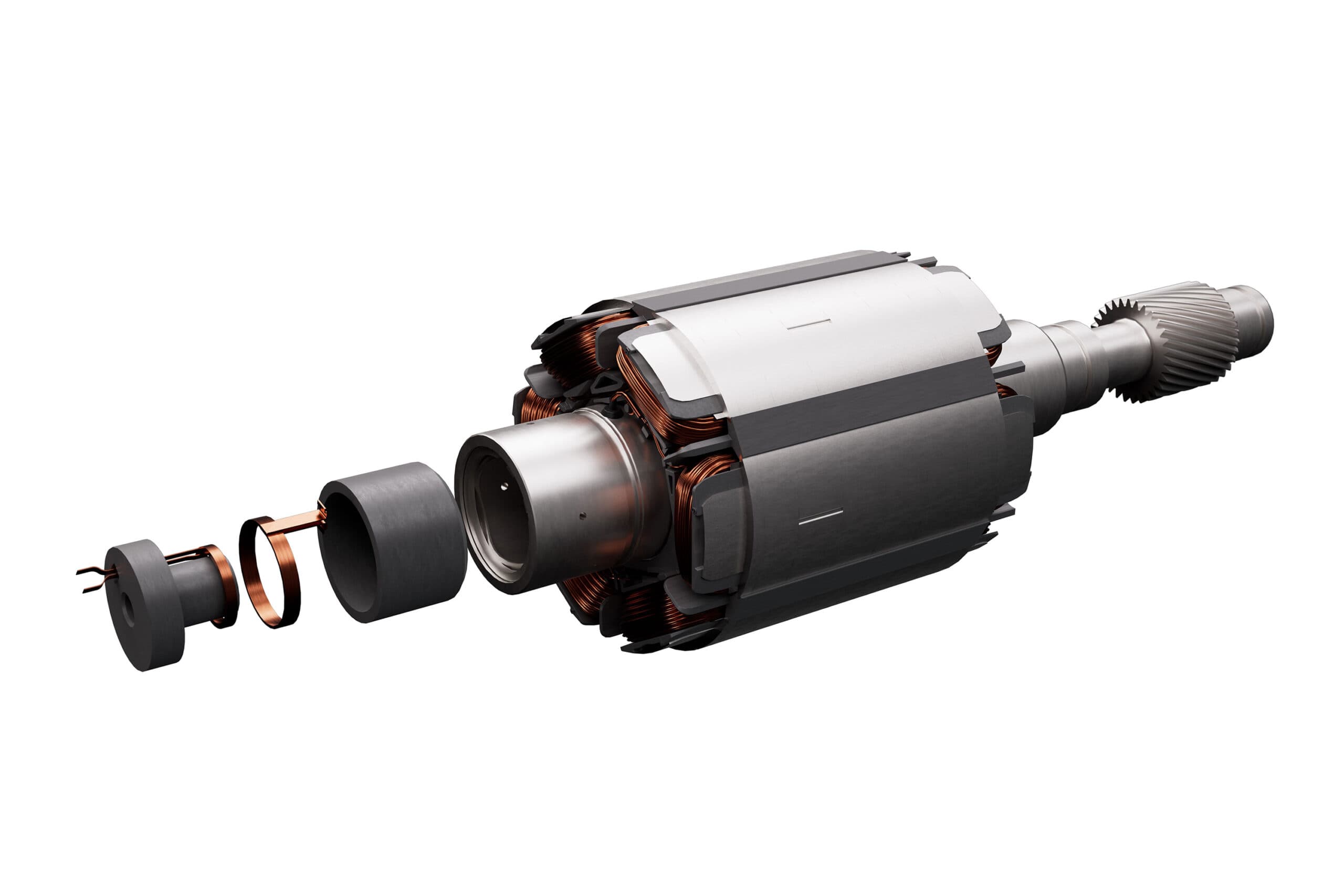Induction motors are nothing new, but German supplier company ZF has created a unique design that delivers comparable performance to permanent-magnet motors, yet is more sustainable and impressively compact. On Friday, the firm announced its new I2SM, short for In-Rotor Inductive-Excited Synchronous Motor, which promises numerous benefits over what’s currently in the market.
Permanent-magnet electric motors are generally more efficient than induction motors because no electrical current is required to create the magnetic field needed for the motor to function; the magnets provide this. The downside, however, is that these powerful magnets often require rare-earth materials – like dysprosium, neodymium and terbium – elements that can be pricey and difficult to source, especially as demand for electronics and EVs increases.
Aside from lowering costs and eliminating potential supply snarls, avoiding the use of rare-earth materials also reduces the carbon footprint of the new I2SM design. According to the company, CO2 released during manufacturing is reduced by up to 50% because no mining, refining or transporting of these elements is required.
Unlike other separately excited synchronous motors (SEMS), ZF’s latest and greatest offering “transmits the energy for the magnetic field via an inductive exciter inside the rotor shaft.” This keeps the overall design very compact, around 3.5 inches (90 mm) shorter than other induction motors, yet this configuration is also extremely efficient, since the inductive exciter reduces energy-transmission losses by up to 15%. Additionally, no brush elements or slip rings are needed, components commonly used in competing induction motors.
“This is our guiding principle for all new products. And we currently see no competitor that masters this technology as well as ZF,” said ZF CEO Dr. Holger Klein in a media release. “With this magnet-free e-motor without rare earth materials, we have another innovation with which we are consistently improving our electric drive portfolio to create even more sustainable, efficient and resource-saving mobility.”
Similarly, Stephan von Schuckmann, member of the board of management of the ZF Group, said, “This uniquely compact electric motor without magnets is impressive evidence of our strategy to make e-drives more resource-efficient and sustainable, primarily through efficiency improvements.” Relatively small design changes and optimizations like the ones made here can reap major benefits.
The new I2SM is not currently available, but ZF plans to develop the technology going forward. Automakers and other companies will have the option to purchase 400- or 800-volt versions, depending on the application. Additionally, the company will “offer it as an option within its own e-drive platform.”

